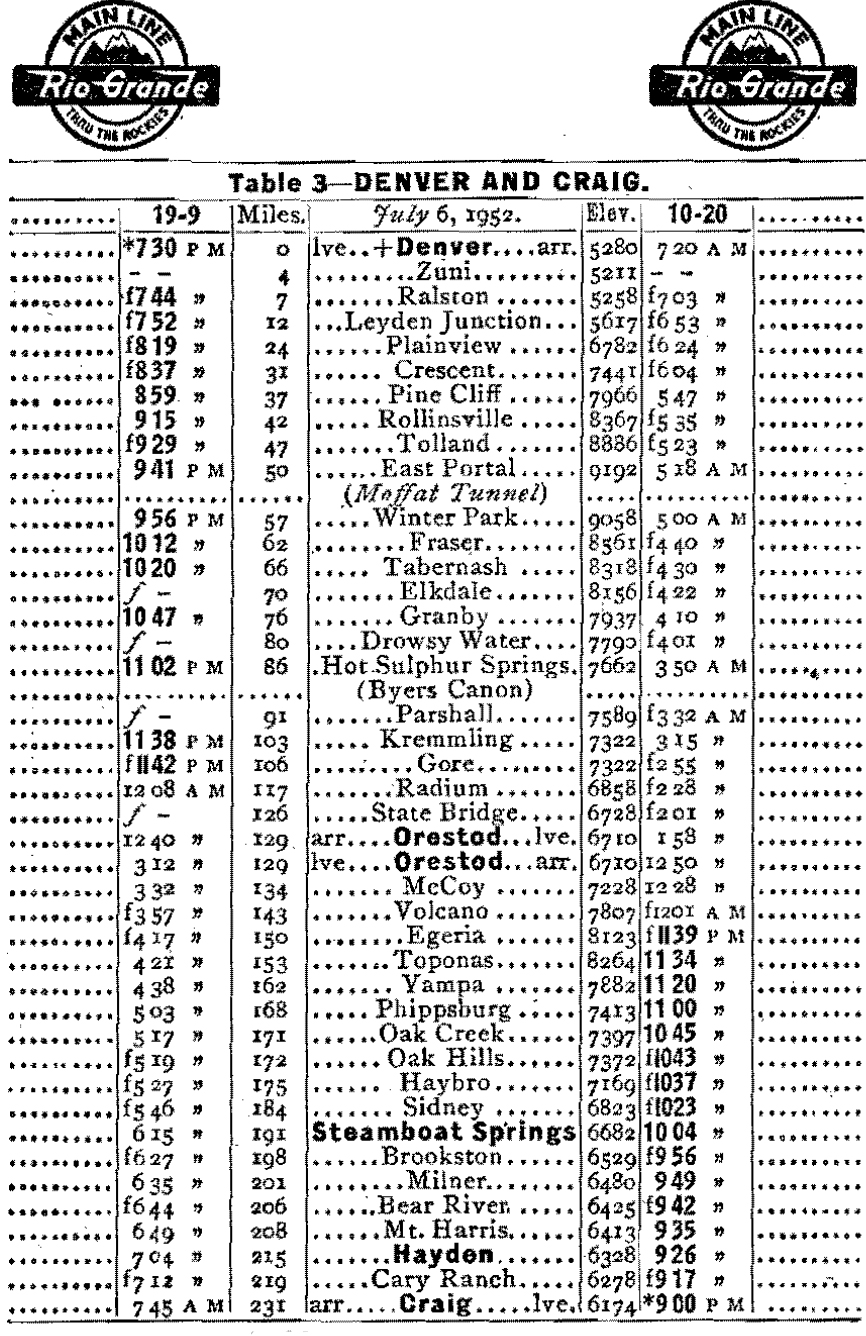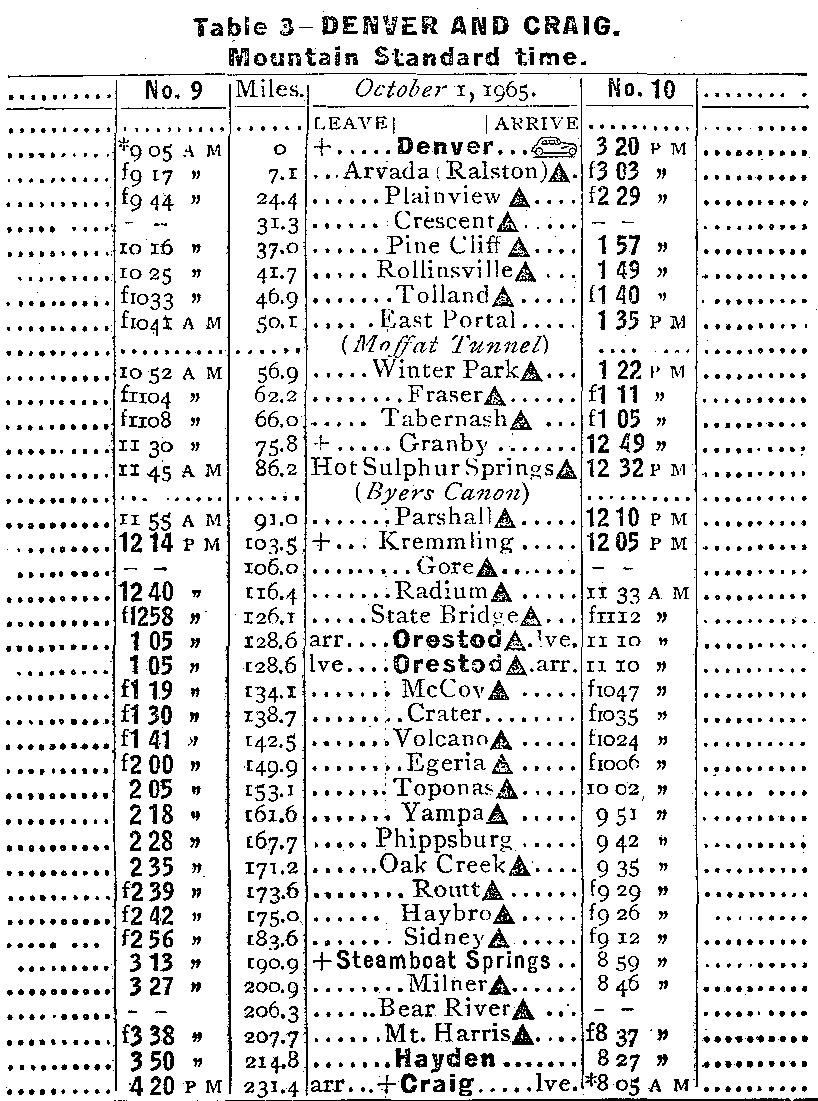"Yampa Valley" (Train): Consist, Timetable, Photos
Last revised: September 15, 2024
By: Adam Burns
The Rio Grande's Yampa Valley Mail, later just the Yampa Valley, was an essential service connecting Denver and Craig, Colorado. Originally launched to facilitate mail delivery, the train was a crucial link for communities like Steamboat Springs.
The line's roots trace back to the Denver & Salt Lake Railway (D&SL), which aimed to connect Denver with Salt Lake City. Though D&SL only succeeded in extending the line to Craig, its construction of the Moffat Tunnel in 1928 provided a direct westward route. This tunnel offered a significant shortcut compared to D&RGW's southern path through Pueblo and the Royal Gorge.
In a bid for competitive advantage, D&RGW acquired D&SL in 1947 and earlier completed the Dotsero Cutoff in 1934 to integrate the two lines. What was by then the Yampa Valley ceased operations in 1968, ending a historic chapter in Colorado's rail transport history.
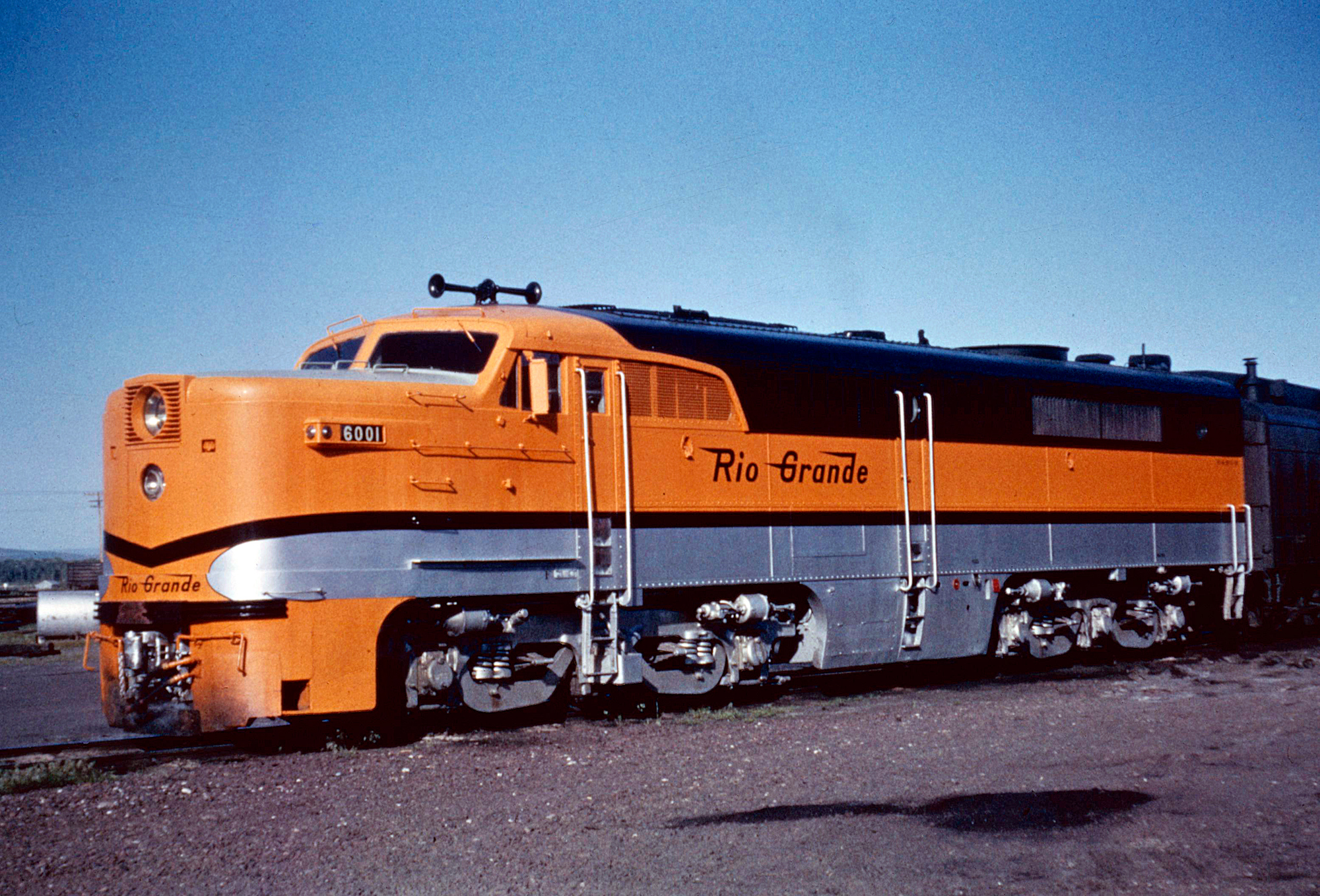 Rio Grande PA-1 #6001 has arrived in Craig, Colorado with the afternoon's train #9, the "Yampa Valley," circa 1966. American-Rails.com collection.
Rio Grande PA-1 #6001 has arrived in Craig, Colorado with the afternoon's train #9, the "Yampa Valley," circa 1966. American-Rails.com collection.The Rio Grande's Yampa Valley, a then-two-car local passenger train with a storied history, made its final journey on April 7, 1968. This service, which began its route in Denver and terminated in the northwestern Colorado town of Craig, was a vital lifeline for communities including Steamboat Springs.
Originally dubbed the Yampa Valley Mail, the train was rebranded as the Yampa Valley in 1963 following the termination of its mail contract by the Post Office.
The origins of this train are intertwined with the ambitions of the Denver & Salt Lake Railway, which sought to link Denver and Salt Lake City. By 1931, the D&SL had only reached Craig before it was acquired by the D&RGW.
However, D&SL's completion of the Moffat Tunnel in 1928 provided a direct westbound route, contrasting with D&RGW's southern detour via Pueblo, the Royal Gorge, and Tennessee Pass before extending to Salt Lake City.
Recognizing the shorter, more efficient corridor provided by the D&SL, the D&RGW pursued and ultimately acquired the D&SL in 1947 after extensive negotiations.
The completion of the Dotsero Cutoff on June 15, 1934 further improved the D&RGW's Salt Lake mainline. The project cut 175 miles off this critical corridor by bypassing Pueblo and using the direct Moffat Tunnel/D&SL line instead.
The origins of the Yampa Valley Mail can be traced back to D&SL's local day and overnight trains servicing Craig, Colorado. In 1951, the daytime locals, and the tri-weekly overnight mixed train - which included a coach-sleeper - were discontinued.
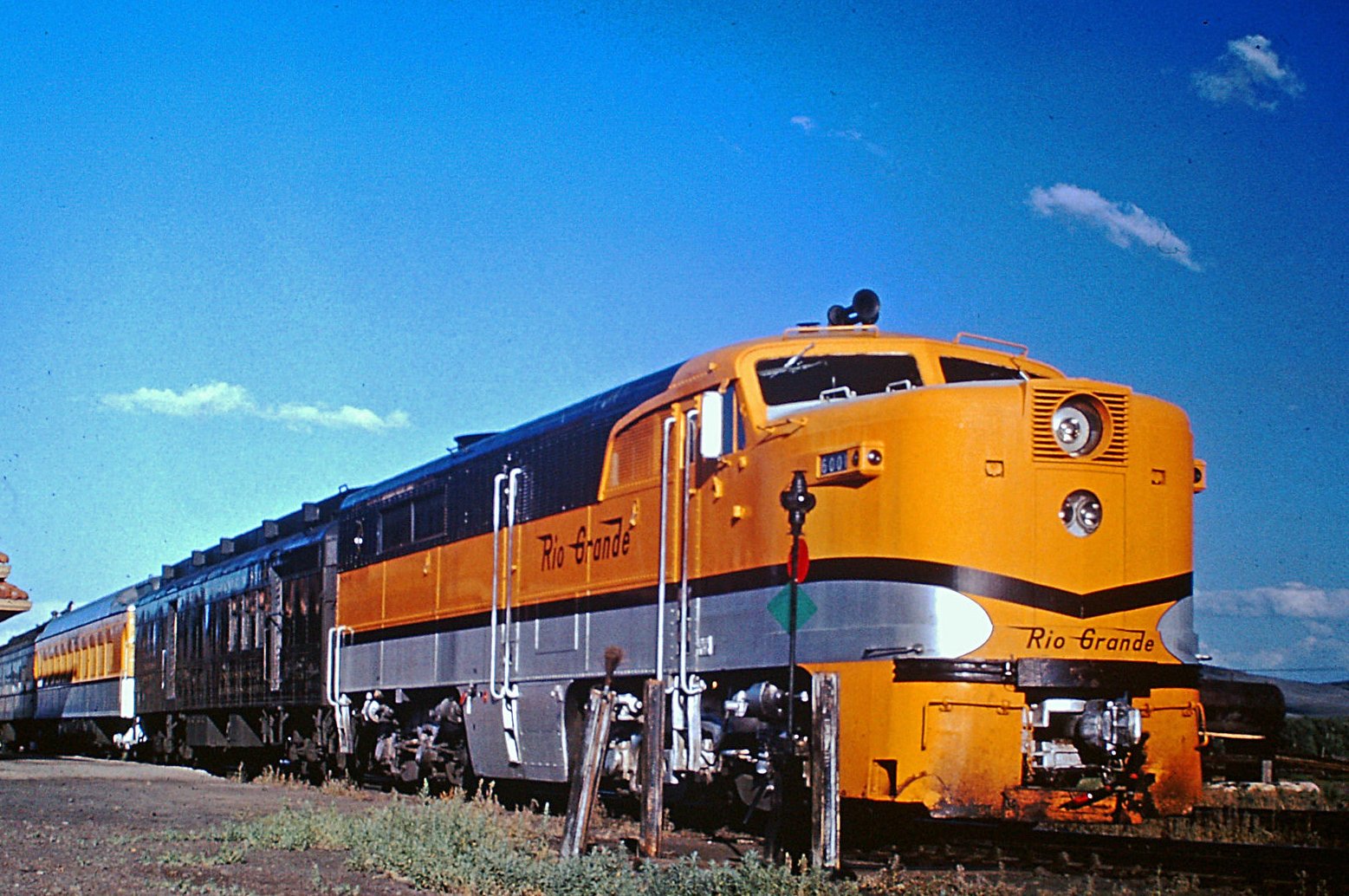 Denver & Rio Grande Western PA-1 #6001 is stopped at Craig, Colorado with the "Yampa Valley," in August, 1962.
Denver & Rio Grande Western PA-1 #6001 is stopped at Craig, Colorado with the "Yampa Valley," in August, 1962.They were replaced by an overnight service as part of trains #19 and #20—the Mountaineer—operating between Denver and Bond, Colorado. At Bond, the line to Craig diverged and continued as a separate train.
This shift to night service left many residents of northwestern Colorado towns dissatisfied, as they relied on daytime trains for their travel needs to Denver. However, in September 1954, just three years later, the nighttime sleeping car service was also dropped.
Trains #9 and #10 were reintroduced as daytime runs, now under the name Yampa Valley Mail. This new name quickly garnered affection and nostalgia among the communities it served, becoming an enduring memory for many in northwestern Colorado.
Consist (July, 1952)
Timetable (July, 1952)
Consist (October, 1965)

Timetable (October, 1965)
The 1960s marked a poignant era for the railroad industry, as numerous lines, including those in Colorado, sought to discontinue passenger train services nationwide.
The rise of interstate highways and the growing preference for air travel, coupled with the Post Office halting the mail-on-rails practice, signaled the impending demise of iconic trains like the 20th Century Limited, as well as smaller ones such as the Yampa Valley.
During this decade, few travelers opted to ride the train from Craig and Steamboat Springs to Denver. The journey was a long endeavor, lasting at least six-and-a-half hours and frequently extending longer due to delays.
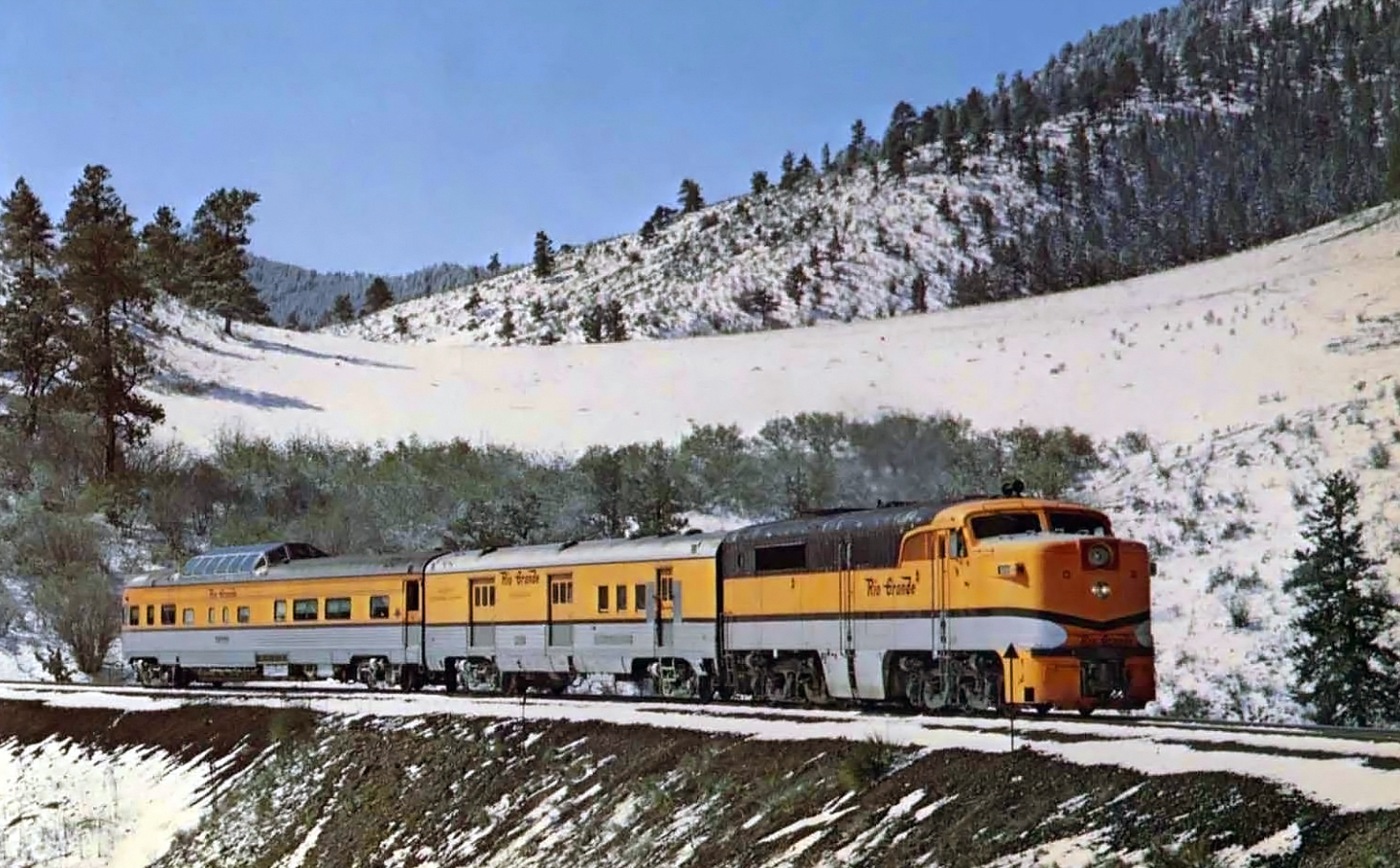 Rio Grande PA-1 #6001 leads an RPO/baggage (#1202) and a Vista-Dome observation as part of the very short "Yampa Valley" (Denver - Craig, Colorado) climbing the stiff 2% grade near Plainview, Colorado during March of 1967. Ken Crist photo.
Rio Grande PA-1 #6001 leads an RPO/baggage (#1202) and a Vista-Dome observation as part of the very short "Yampa Valley" (Denver - Craig, Colorado) climbing the stiff 2% grade near Plainview, Colorado during March of 1967. Ken Crist photo.In comparison, a Continental Trailways bus made the trip in four hours, and a car could complete it in just three. Improved highways, particularly over Rabbit Ears Pass, rendered the lengthy train ride in a single coach—with its 30 scheduled and 20 possible flag stops along the nearly 200-mile route—unappealing.
When the Colorado railroad commission eventually sanctioned the termination of the train's service, residents of the Yampa Valley recognized the economic inevitability. Nevertheless, many lamented the loss of a historic treasure that had once been an integral part of their community.
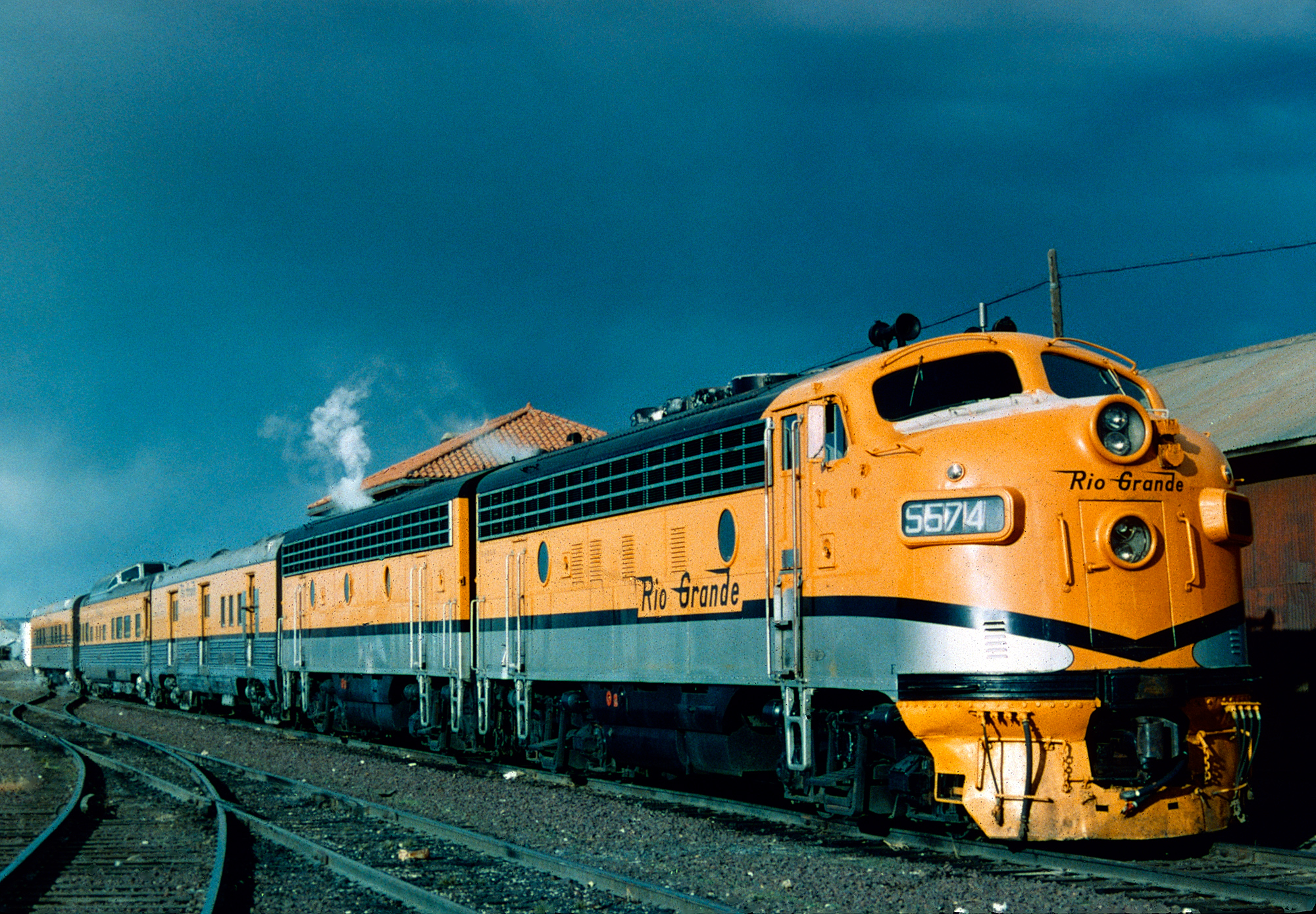 Rio Grande F7A #5574 is stopped at Craig, Colorado with the "Yampa Valley" on November 19, 1967. Ed Fulcomer photo. American-Rails.com collection.
Rio Grande F7A #5574 is stopped at Craig, Colorado with the "Yampa Valley" on November 19, 1967. Ed Fulcomer photo. American-Rails.com collection.During the train's late era it wasn't uncommon to see venerable Alco PAs leading the train, such as the photo featured at the top of this article. By then, it was a coach-only service.
In November 1963, D&RGW's timetables officially rebranded the Yampa Valley Mail to simply the Yampa Valley. This renaming coincided with the growing trend of discontinuing iconic Colorado passenger trains.
The pace quickened as notable services like the Missouri Pacific's Colorado Eagle, connecting Denver to St. Louis, ended in May, 1966. That same month, the Prospector terminated its longstanding route between Denver and Salt Lake City.
By July 1967, the Royal Gorge, which had already shortened its journey to Salida, Colorado, was also discontinued. The era drew to a close on April 7, 1968, when the Yampa Valley made its final run, marking the end of passenger train service to northwestern Colorado.
Recent Articles
-
Iowa Dinner Train Rides In Boone!
Jan 07, 26 11:06 AM
If you’ve ever wished you could pair a leisurely rail journey with a proper sit-down meal—white tablecloths, big windows, and countryside rolling by—the Boone & Scenic Valley Railroad & Museum in Boon… -
Wisconsin Dinner Train Rides In North Freedom!
Jan 06, 26 10:18 PM
Featured here is a practical guide to Mid-Continent’s dining train concept—what the experience is like, the kinds of menus the museum has offered, and what to expect when you book. -
Pennsylvania Dinner Train Rides In Boyertown!
Jan 06, 26 06:48 PM
With beautifully restored vintage equipment, carefully curated menus, and theatrical storytelling woven into each trip, the Colebrookdale Railroad offers far more than a simple meal on rails. -
North Carolina ~ Murder Mystery ~ Dinner Train Ride
Jan 06, 26 11:26 AM
While there are currently no murder mystery dinner trains in the Tarheel State the Burgaw Depot does host a murder mystery dinner experience in September! -
Florida's - Murder Mystery - Dinner Train Rides
Jan 06, 26 11:23 AM
Florida, known for its vibrant culture, dazzling beaches, and thrilling theme parks, also offers a unique blend of mystery and fine dining aboard its murder mystery dinner trains. -
New Mexico's - Wine Tasting - Train Rides
Jan 06, 26 11:19 AM
For oenophiles and adventure seekers alike, wine tasting train rides in New Mexico provide a unique opportunity to explore the region's vineyards in comfort and style. -
Ohio's - Wine Tasting - Train Rides
Jan 06, 26 11:14 AM
Among the intriguing ways to experience Ohio's splendor is aboard the wine tasting trains that journey through some of Ohio's most picturesque vineyards and wineries. -
Connecticut's Thomas The Train Rides
Jan 06, 26 11:06 AM
For 2026, the tour stop at Essex brings Thomas (and Percy, too) to the historic Valley Railroad for a full day of events for the kids. -
Maryland's Thomas The Train Rides
Jan 06, 26 11:00 AM
In 2026, the B&O Railroad Museum in Baltimore welcomes the Let’s Rock, Let’s Roll Tour with four event days that combine a Thomas-themed excursion with other activities. -
Tennessee's Thomas The Train Rides
Jan 06, 26 10:51 AM
Set on the grounds of one of the Southeast’s best-known operating railroad museums, the Thomas the train event blends kid-friendly fun with the unmistakable sights, sounds, and atmosphere of a real wo… -
Georgia's Thomas The Train Rides
Jan 06, 26 10:44 AM
Day Out With Thomas is set to roll back into Cordele in 2026, bringing Thomas the Tank Engine and a full family festival to the SAM Shortline at Georgia Veterans Memorial State Park. -
Staten Island Rapid Transit
Jan 06, 26 10:02 AM
The Staten Island Rapid Transit has long served Staten Island since the 19th century and today is known as the Staten Island Railway. -
New York Dinner Train Rides In The Adirondacks!
Jan 05, 26 09:45 PM
Operating over a restored segment of the former New York Central’s Adirondack Division, the Adirondack Railroad has steadily rebuilt both track and public interest in passenger rail across the region. -
Ohio Dinner Train Rides On The CVSR!
Jan 05, 26 08:32 PM
While the railroad is well known for daytime sightseeing and seasonal events, one of its most memorable offerings is its evening dining program—an experience that blends vintage passenger-car ambience… -
Pennsylvania's - Wine Tasting - Train Rides
Jan 05, 26 01:08 PM
Wine tasting trains are a unique and enchanting way to explore the state’s burgeoning wine scene while enjoying a leisurely ride through picturesque landscapes. -
West Virginia - Wine Tasting - Train Rides
Jan 05, 26 01:02 PM
West Virginia, often celebrated for its breathtaking landscapes and rich history, offers visitors a unique way to explore its rolling hills and picturesque vineyards: wine tasting trains. -
Virginia - Wine Tasting - Train Rides
Jan 05, 26 12:58 PM
Wine tasting trains in Virginia provide just that—a unique experience that marries the romance of rail travel with the sensory delights of wine exploration. -
Utah - Wine Tasting - Train Rides
Jan 05, 26 12:37 PM
Utah, a state widely celebrated for its breathtaking natural beauty and dramatic landscapes, is also gaining recognition for an unexpected yet delightful experience: wine tasting trains. -
Kentucky Valentine's Train Rides
Jan 05, 26 12:31 PM
If you’re looking for a date night that feels a little more cinematic than the usual reservation-and-a-movie routine, Bardstown’s My Old Kentucky Dinner Train delivers the kind of evening you remember… -
Pennsylvania Valentine's Train Rides
Jan 05, 26 12:12 PM
Tucked amid the rolling farmland of Lancaster County, Pennsylvania, the Strasburg Rail Road stands as one of the most celebrated and successful heritage railroads in North America.


